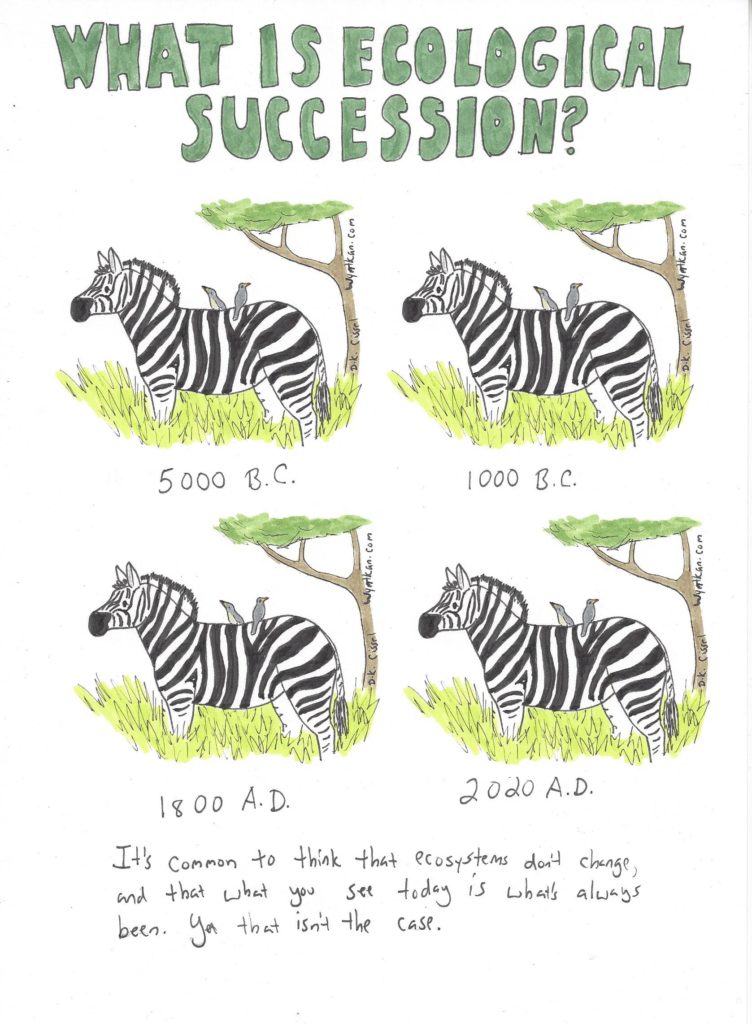
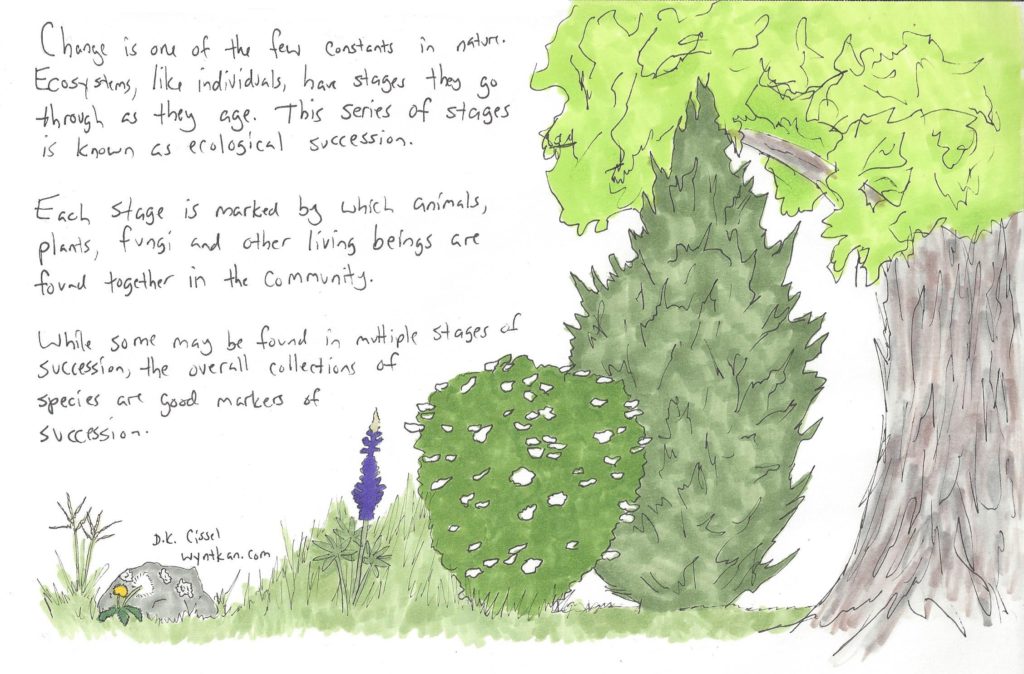
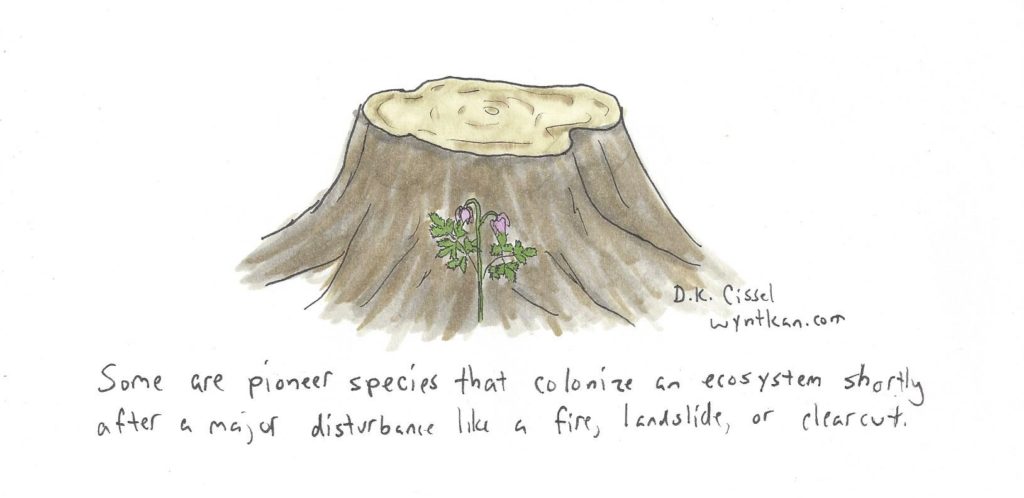
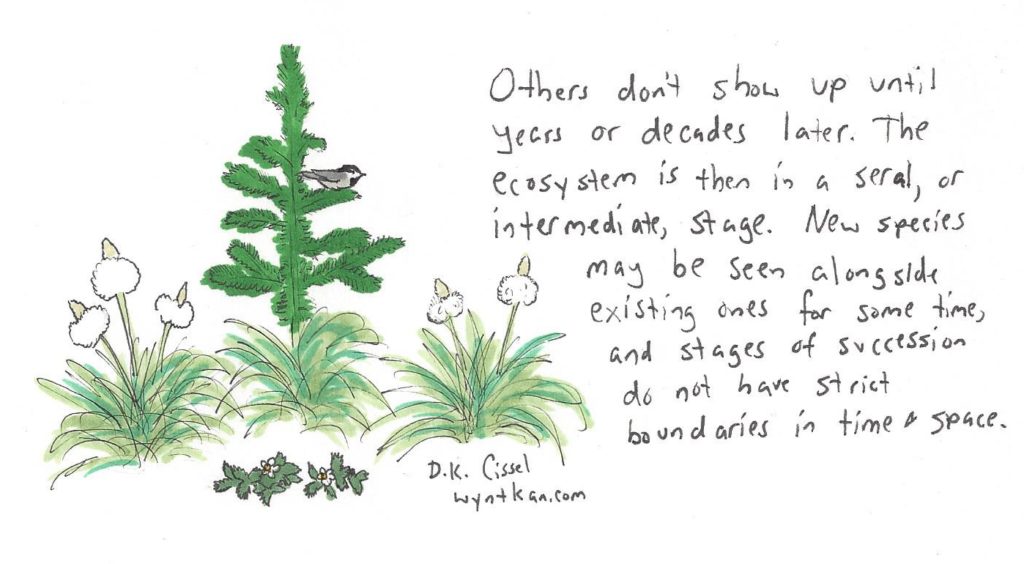
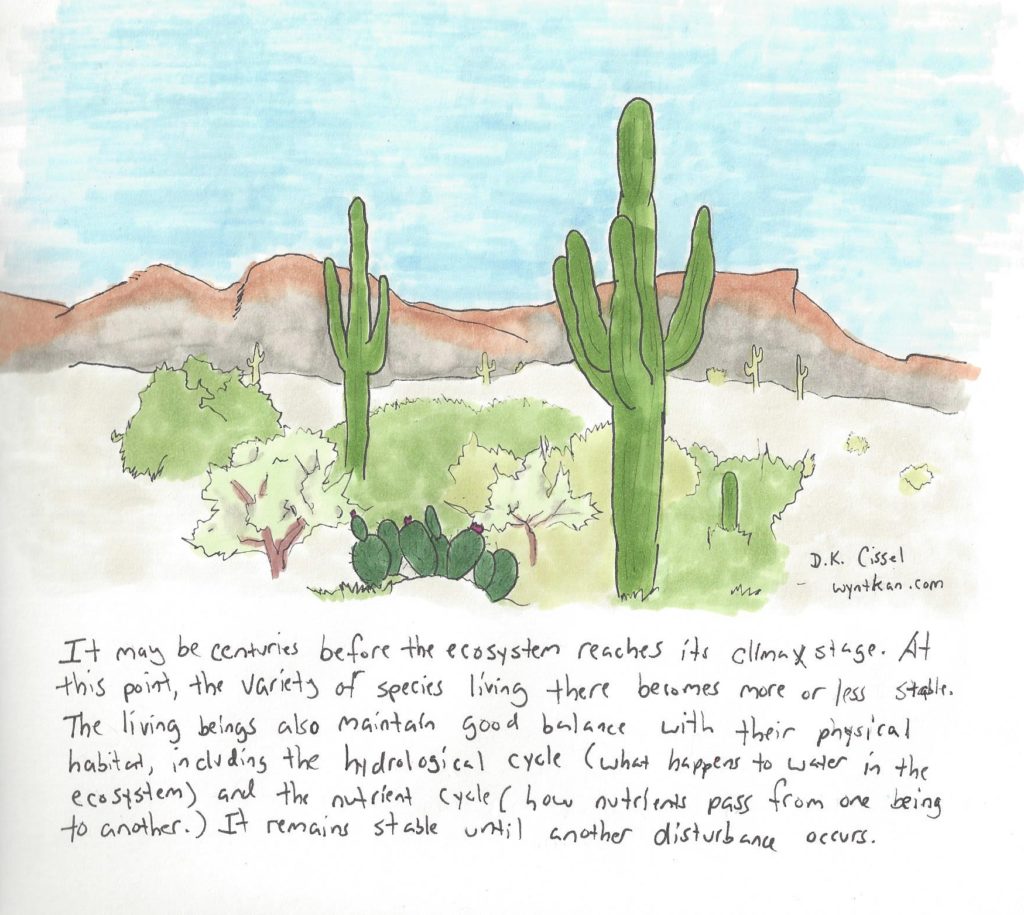
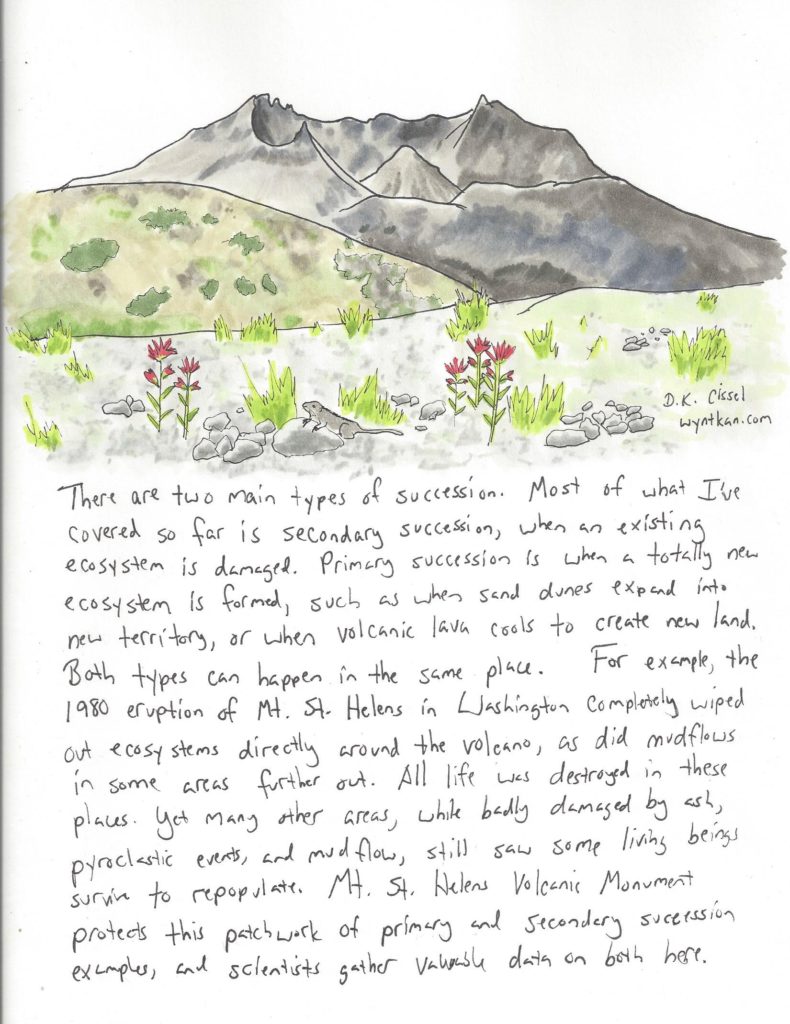
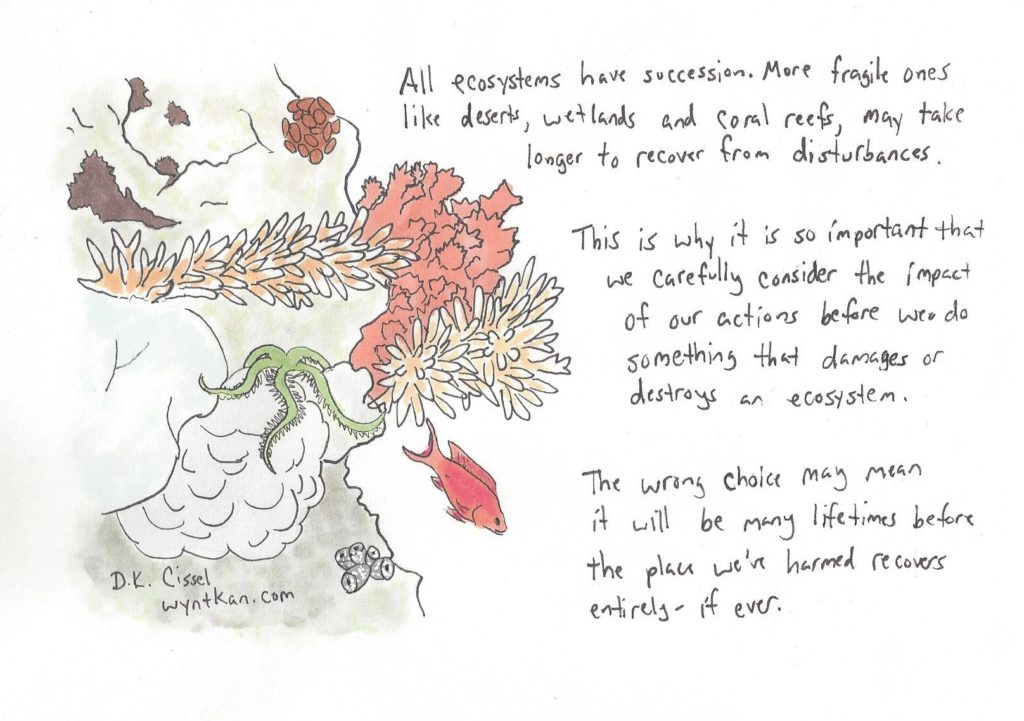
For a lot of people, a bunch of trees in a place counts as a “forest”. Yet those of us who have a more ecological eye can take a look at those trees and figure out whether they’re an established forest, or whether they’re in a younger stage of succession, just by looking at the age of the trees and the various species of living being represented. Other ecosystems may be a bit more challenging to assess, but they have their own chains of succession as well. And as I explained in my comic on old growth forests, not all species can live in a younger, recovering ecosystem. So consider this comic a very basic introduction to the idea that there’s more to a given habitat than what immediately meets the eye!
Also, I had a lot of fun drawing new ecosystems I’ve never tried before! I’m especially proud of my portrait of Loowit (Mt. St. Helens.)
Species portrayed: Plains zebra (Equus quagga), yellow-billed oxpecker (Buphagus africanus), acacia tree (Acacia sp.) big bluestem grass (Andropogon gerardii), common dandelion (Taraxacum officinale), greenshield lichen (Flavoparmelia caperata), wild lupine (Lupinus perennis), arrowwood viburnum (Viburnum dentatum), eastern red cedar (Juniperus virginiana), shagbark hickory (Carya ovata), Pacific bleeding heart (Dicentra formosa), mountain chickadee (Poecile gambeli), noble fir (Abies procera), beargrass (Xerophyllum tenax), wild strawberry (Fragaria virginiana), saguaro cactus (Carnegiea gigantea), prickly pear cactus (Opuntia ficus-indica), mesquite (Prosopis sp.), paloverde (Parkinsonia sp.), paintbrush (Castilleja sp.), northern pocket gopher (Thomomys talpoides), northern red snapper (Lutjanus campechanus), green brittle star (Ophiarachna incrassata), assorted corals

Love these drawings!! You’ve been quite productive of late, D.K.!
Thank you! I really appreciate it!